
How to Drive Your Boat Like a Pro: A Guide to Mastering Watersports
Wake sports, encompassing activities like wakeboarding and wake surfing, are a perfect way to enjoy a day out on the water. Central to the thrill of these sports is the role of the boat driver, whose ability to navigate can make or break the experience for participants. Whether you're a seasoned boater or a newcomer to the world of wake sports, understanding the nuances of driving a boat for different disciplines of water sports is essential for safety, enjoyment, and success on the water.
Safety First
The number one job of the boat driver is to keep everyone in, behind, and around the boat safe. Distractions like changing the music, getting someone a beverage from the cooler, etc., are secondary to operating the boat in a safe way and having awareness of what is going on in the water and around the boat. Keep your distance from the shoreline and other boats, especially when making those hairpin turns to loop back for a downed rider. When it's time to swing back around, shift into neutral, let those wakes do their thing, then make a tight turn and ease your way back to your rider – & don't swamp your boat!
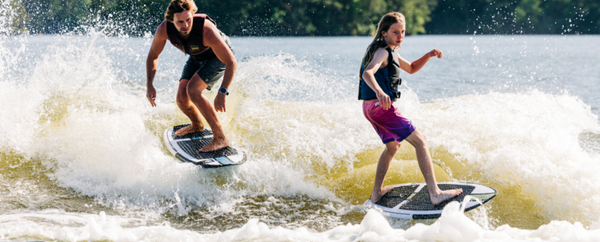
Wakesurfing: Consistent, Straight Path
With proper ballast weight and a solid wakeshaper or wake system, all you'll need is a smooth, gradual acceleration to get a wakesurfer gliding effortlessly atop the water. The sweet spot you're aiming for is around 10 to 11 mph. Be ready for some serious bow rise – it's part of the wakesurfing package deal. To keep your visibility crystal clear, consider raising the helm seat, popping up a seat bolster, or even adding a cushion or two for extra height. Your full ballast bags add a lot of mass to your boat, so expect that the boat will be harder to accelerate, stop and turn.
As you cruise along, aim to keep things nice and straight. Deep water is your best bet for optimal wake size, so steer clear of those shallow spots if you can help it. Keep your eyes peeled for any boat traffic or obstacles lurking in the water – safety first, always.

Hydrofoiling: Riding High Above the Water
Now, let's elevate things a bit – literally. We're talking foil surfing, where you ride high above the water on your own personal magic carpet. First off, how you'll drive depends on the skill of the rider.
For beginners, start with a short wakeboard rope (around 55’ feet) and keep the boat speed super slow, less than 10MPH. You want just enough speed to get the person up on the board, but not so much that the foil is generating a lot of lift constantly.
And intermediate to advanced riders, you can bump the boat speed up to normal sure speed ranges, 11-12. You want to ease into it, gradually building up speed until your foil surfer catches some air.
Now, once your hydrofoiler is soaring, keep a steady hand on the throttle and maintain a consistent speed. Sudden changes can throw off their balance and send them crashing back down to reality.
When it's time to make a turn, take it nice and easy. Start by reducing your speed slightly to give your hydrofoiler a heads-up, then make a gentle, gradual turn to keep the ride smooth and steady.
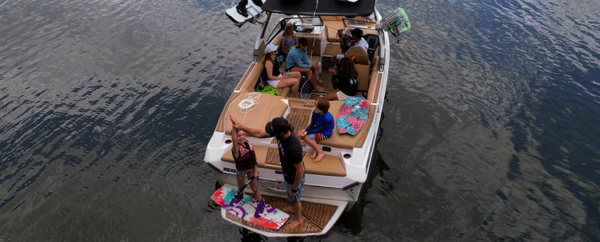
Water-Skiing and Wakeboarding: Smooth and Steady
For the water-skiers and wakeboarders among us, it's all about that smooth, glassy water and keeping those wakes clean and symmetrical. So, no pressure, but the riders are counting on you to nail it.
When you're out there, aim for straight passes, smooth turns, and retracing your path. And hey, if your riders like to wander, give 'em some straight stretches with the occasional turn to mix things up.
Now, if you've got speed control, use it – it's like cruise control for the water. Otherwise, just keep a steady hand on the throttle and make those small adjustments. Oh, and keep an eye on your skiers and boarders – they've got some serious pull, especially when they're cutting through those wakes.
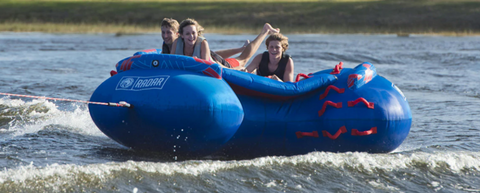
Tubing: Fun For All Ages
Tubing – the classic, family-fun water activity. First off, we know you want to give your tuber a heck of a ride but keep it chill on the speedometer, especially if you've got kiddos on board. We're talking around 8 mph for the little ones and maybe 15 to 18 mph for the grown-ups. No need to kick things into overdrive here.
Now, when it comes to maneuvering that tube, think smooth, controlled S-turns. None of those crazy sharp twists and turns that'll leave everyone hanging on for dear life and confuse every other boater out there. Avoid those whips unless you're ready to hold onto your hats – even at slower speeds, those tubes can pick up some serious pace. Never tow a tube from the tower. Use the pylon, or rear tow hook if your boat is not equipped with a ski pylon.
Enjoy Your Water Sports Responsibly
Your day on the water starts at home. Run through a quick boat checklist to make sure you've got all the essentials covered:
- Check that your boat's powered up and fueled.
- Give the navigation lights and gauges a once-over.
- Don't forget your keys, boat registration, and license.
- Make sure you've got all the necessary gear onboard like lifejackets, flares, and a first-aid kit.
When you're ready to launch, take a moment to scope out the boat ramp. Position your vehicle and boat for a smooth launch. And when you're backing that boat in, use clear hand signals to keep things on track.
When you're out on the water, keep safety in mind. If you're driving the boat, it's best to steer clear of alcohol. Make sure life jackets fit properly for each passenger on board and that you're using the proper life jacket for water sports. Designate a spotter to keep an eye on the rider whenever someone is behind the boat. Be sure to use the correct rope for the sport your rider is enjoying and keep your rider in sight for good communication. When they fall off, watch your speed when circling back to pick them up so you don't send a huge wave their way.
As for driving the boat, be mindful of your wake and keep an eye out for other folks on the water. It's all about sharing the space and having a good time. Be aware of your wake when passing shorelines. Show respect to fellow boaters, fishermen, and shoreline property owners when driving.
After a day of fun, it's time to head back. Drain those ballast bags for easier maneuvering at the ramp. Then, offload your crew and gear at the dock before slowly backing the trailer into the water.
And remember, safety first, folks. Now go out there and show those waves who's boss!
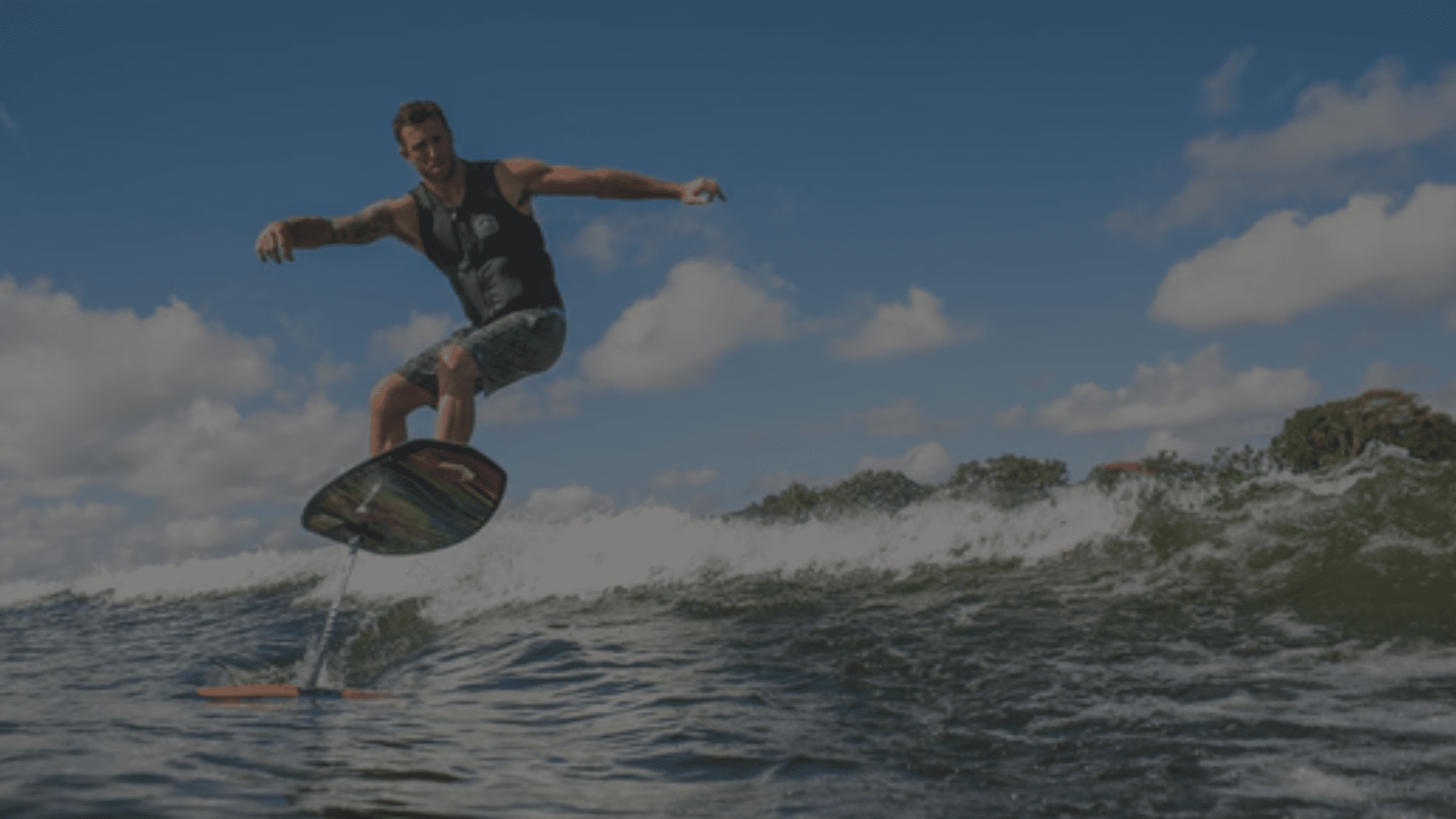
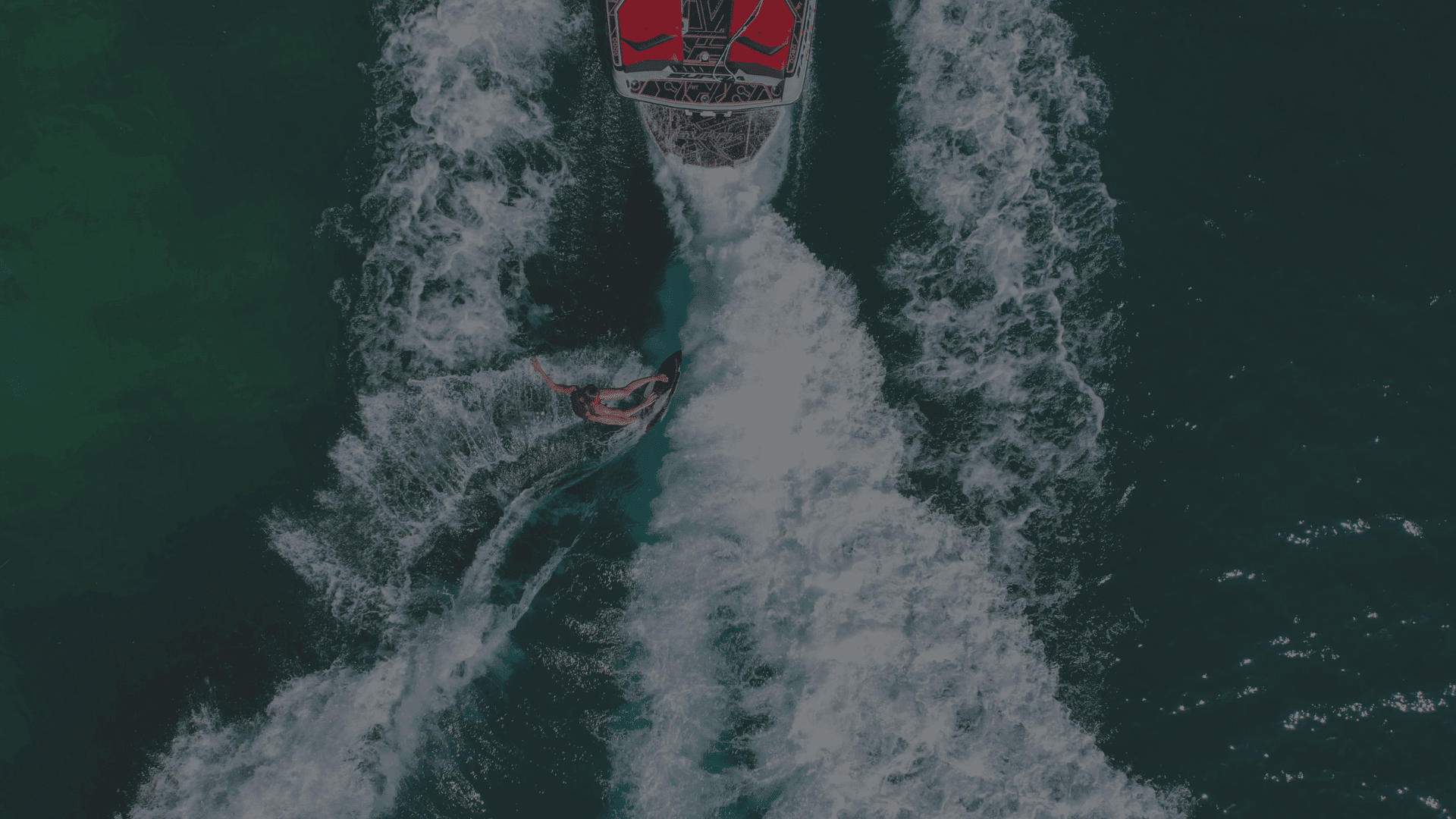
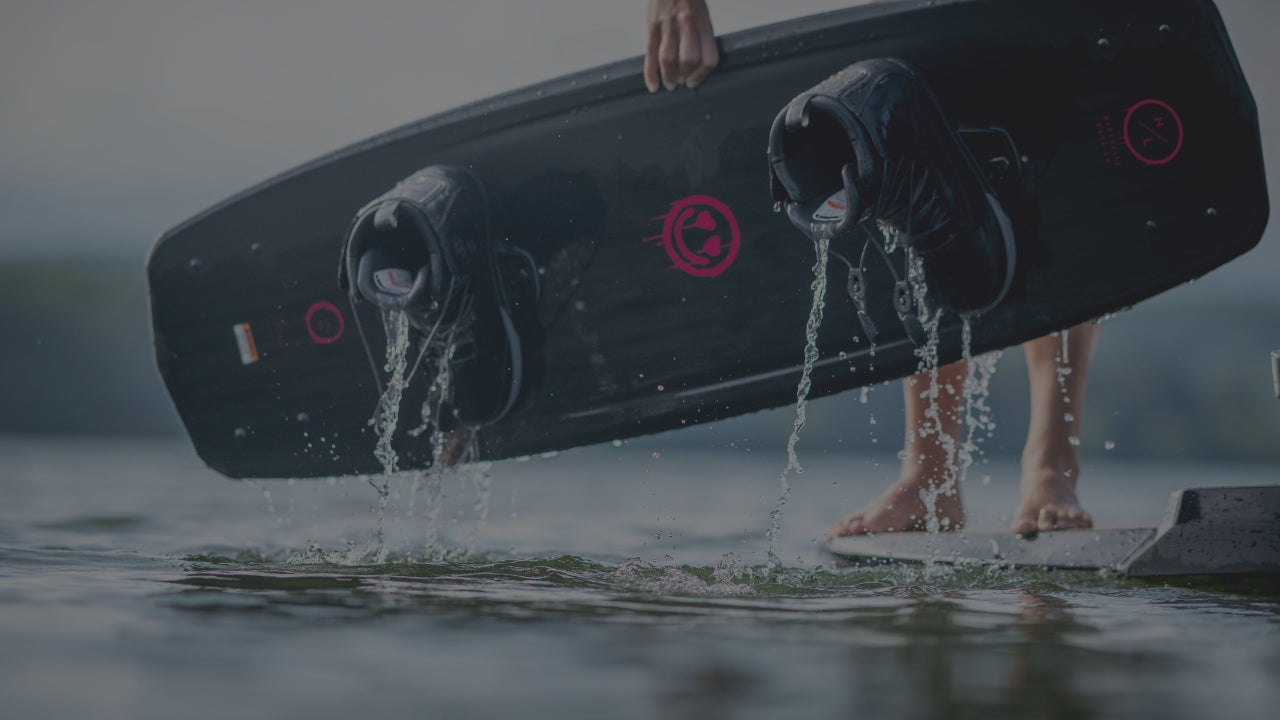
Post Comments
0 Item(s)